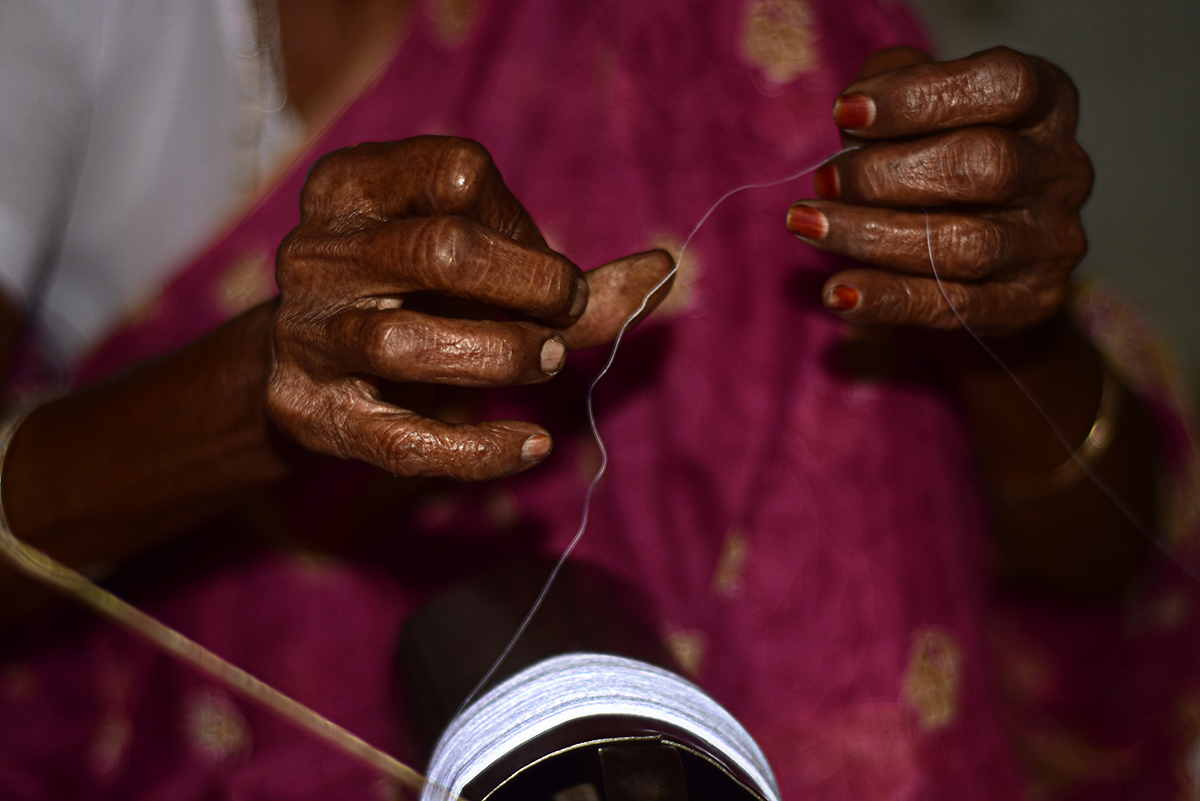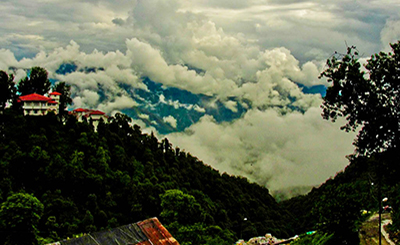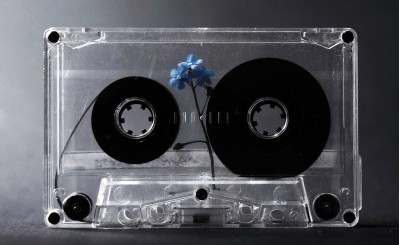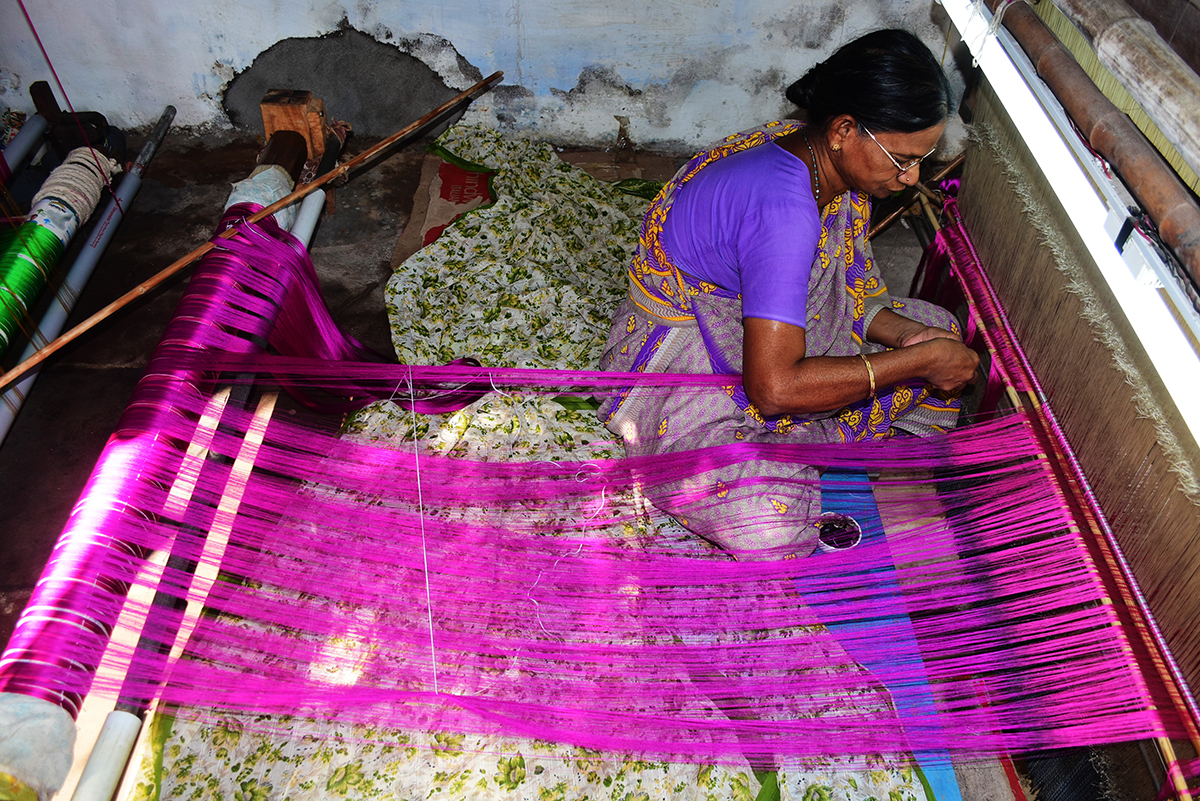
Saraswathi fixes the warp to the loom, traditionally called ‘Paavu Punaithal’ — the initial stage of the weaving process. Typically done by the women, each of the 4,500 strands are manually twisted to the loom. All photos: Anusha Sundar
Onnupuram, a village in Tamil Nadu, is the hub of weavers, who have perfected the craft of making handwoven silk sarees, passing it on from one generation to another
As one walks down the streets of Onnupuram village, it is unavoidable to hear the rhythmic beats of handloom pedals, as the artisans weave to create their traditional creations. Situated 1,27.6 kilometers away from the state capital; Chennai, is a village in the southern state of Tamil Nadu, India, that serves as a home to the craft of making handwoven silk sarees. It is fascinating to see how bundles of simple, raw and colorless larvae silk threads enter the village, only to go out in form of rich, elegant and colorful sarees of 6 yards each. With more than 100 families earning their livelihood from weaving, the village is a hub for one big community, divided into clusters of households.
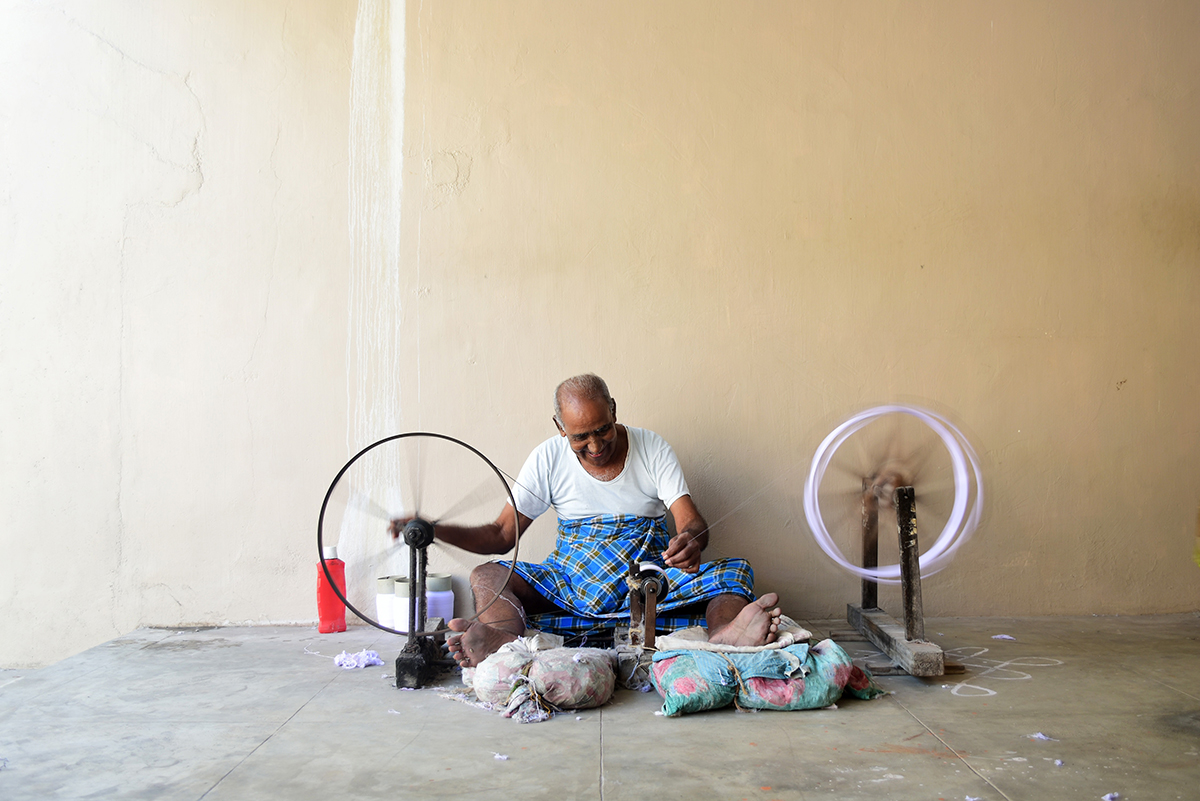
Balakrishna, a weaver from Onnupuram, spins cotton thread, using the charkha (spinning wheel).
Each household is a small family, ultimately connected to the other households by blood or matrimony. Passed from one generation to another, every home in the village is equipped with one or more handlooms, as the members of family pass their knowledge to the younger generations. They proudly say, “Our children go out and study what they want to, only to learn the art of weaving too along with, as it runs in our blood and tradition.”
The village is divided into different societies and companies for whom the weavers contribute them work for in return for monetary incentives which forms a major contribution for their income. The societies are small scale firms who have emerged from the weavers’ background and distribute the sarees to branded companies and showrooms that sell the sarees under their name. The designs are provided by the brands, after which the templates are prepared while the raw silk larvae threads are spun and dyed. Once it reaches the weavers, the yarn is prepared for the loom in a certain manner after which it is set to the loom. Each filament is fixed to the yarn by twisting in a certain manner. This process continues for about 4,500-4,800 individual filaments to the loom.
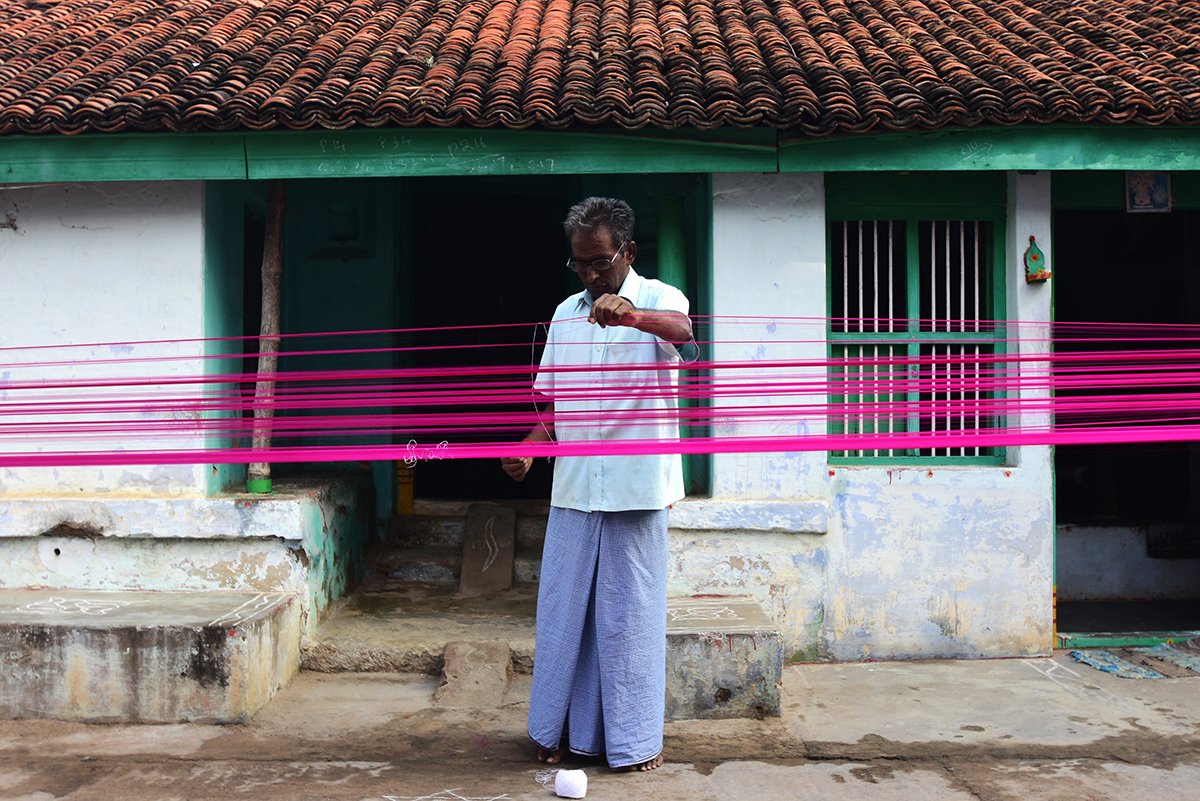
M.K. Gondhandabani, who has been weaving for 30 years, prepares the warp of the saree for the loom on the street
Generally done by the women folk of the community, the saree is then woven, packed neatly to be delivered to the companies. The photo story aims to capture the very essence of the weavers and their pride in carrying the art until now. The art sees no gender or age as everyone equally contributes to the making of the saree. The artisans talk with glee on their faces and shine on their eyes, as they talk about their work and tradition.
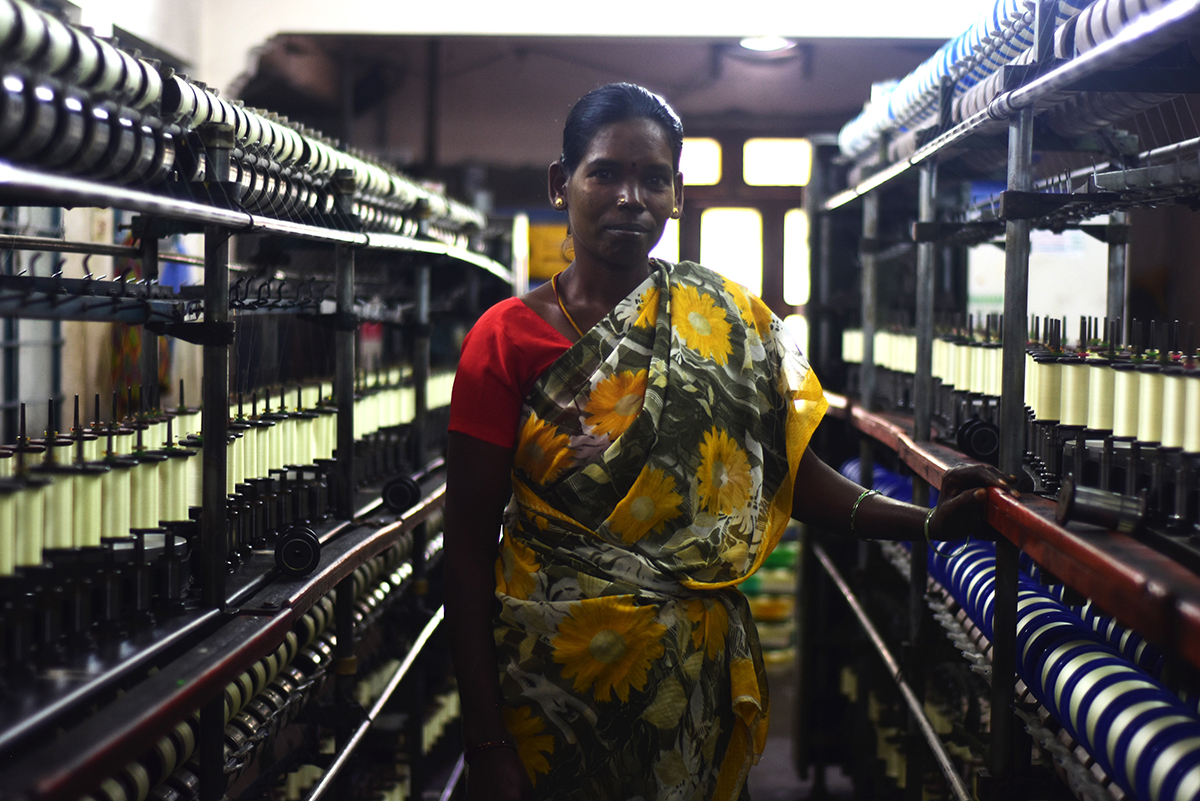
Shanthi, a worker in the yarn factory where the machines produce around 90 decibels.
“We work all seven days and the only day we take an off is during the full moon day that occurs once in every month. It is the day we pay our respects to the God who have blessed us with good fortune,” says one of them. Not just their source of livelihood, but also the sheer determination to keep alive their heritage and practice with life, the weavers’ community is as closely knit as the warp and weft of their creations. The luxury they create is still sometimes away from their reach, yet the optimistically work with their souls, creating colorful masterpieces that are adorned by the creamier sections of the society.
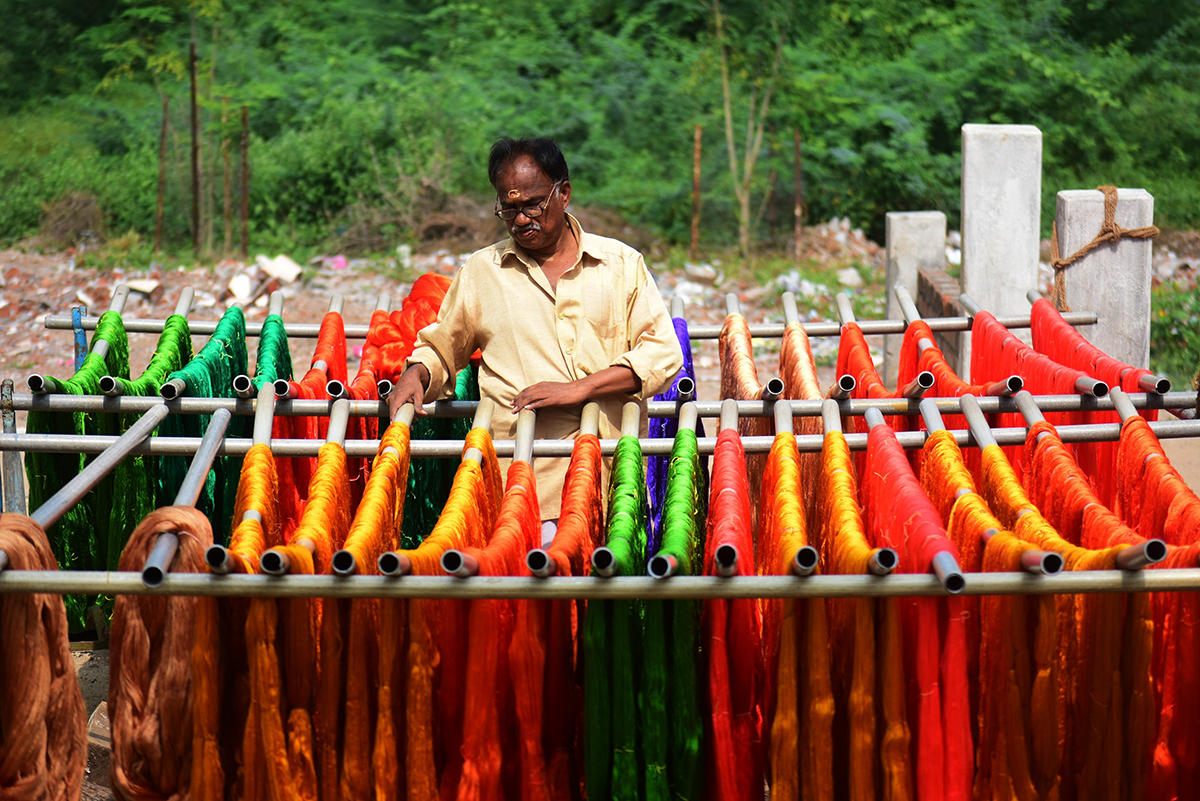
Arunachalam, who has been in this industry since he was 12 years of age, dries the yarn. The spun yarn is then separated to the length of the sarees and dyed accordingly. The colours have got their unique names and takes about 2-3 days for the preparation of the dyed yarn.
As a community, they work together, knowing every single detail of each element born within their territory. It is not surprising to hear a woman from one household to tell what is being woven or in process in any of the other homes, as they make a living by rising together as a flock of birds. It is not a bed of roses for the weavers of Onnupuram, but definitely they do not complain it to be a bed of thorns as difficulties are attached to their occupation. Why do they work without a break? “This is what feeds us and we do not want to let it go. If we take rest, it is a loss of pay which will affect us in turn. Seeing for a small leisure time, we cannot afford to lose our living,” says a weaver.
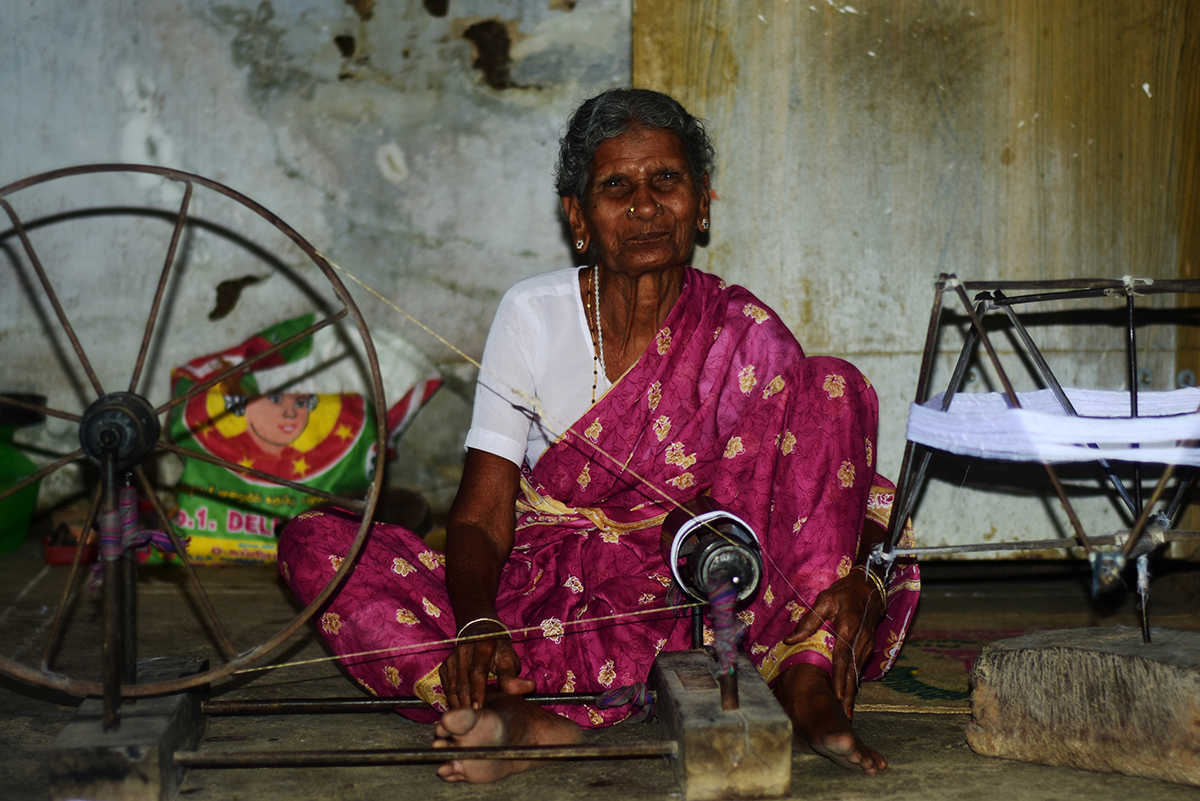
Shakuntala, 90, spins the cotton thread using the charkha, which was a symbol of Indian Independence movement. She has been doing this since the age of 20.
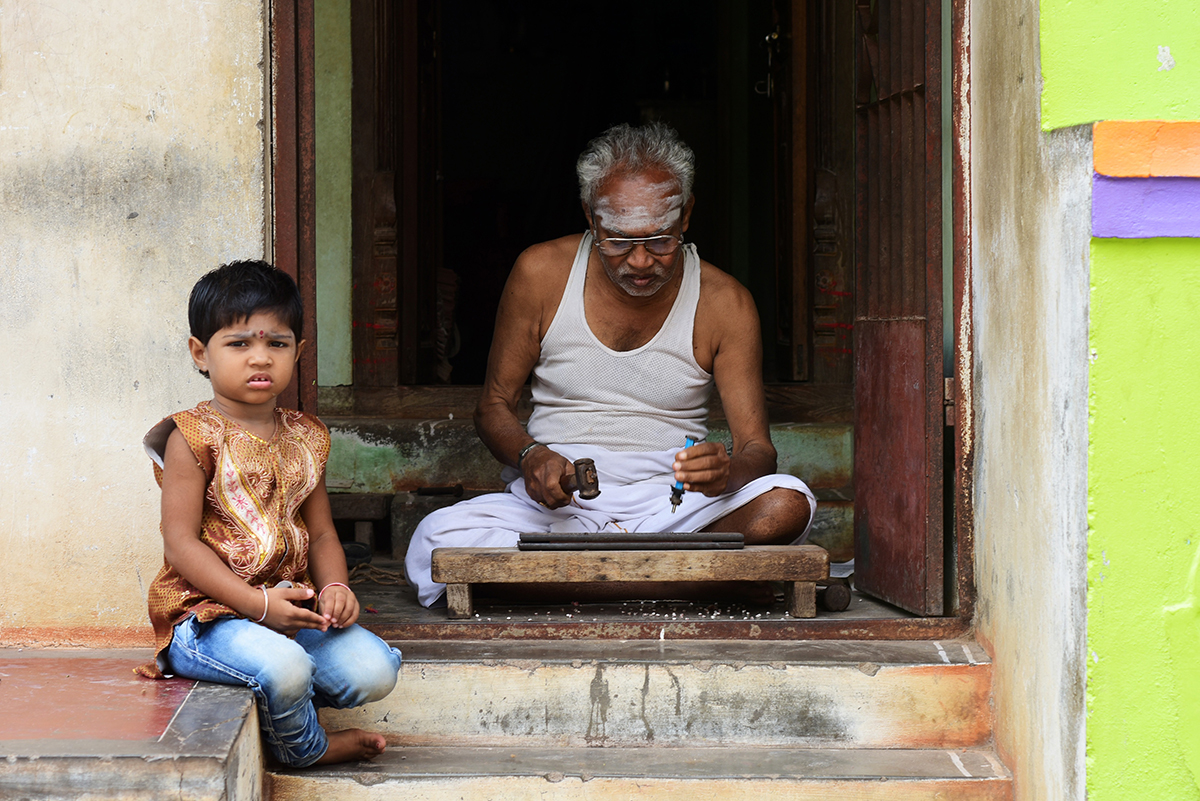
Venkatesan is the only artisan within the community who makes the handmade design templates for the handloom weave. The design is made using manual drawing on graph sheets with dots, which is now replaced with computer software and printing.
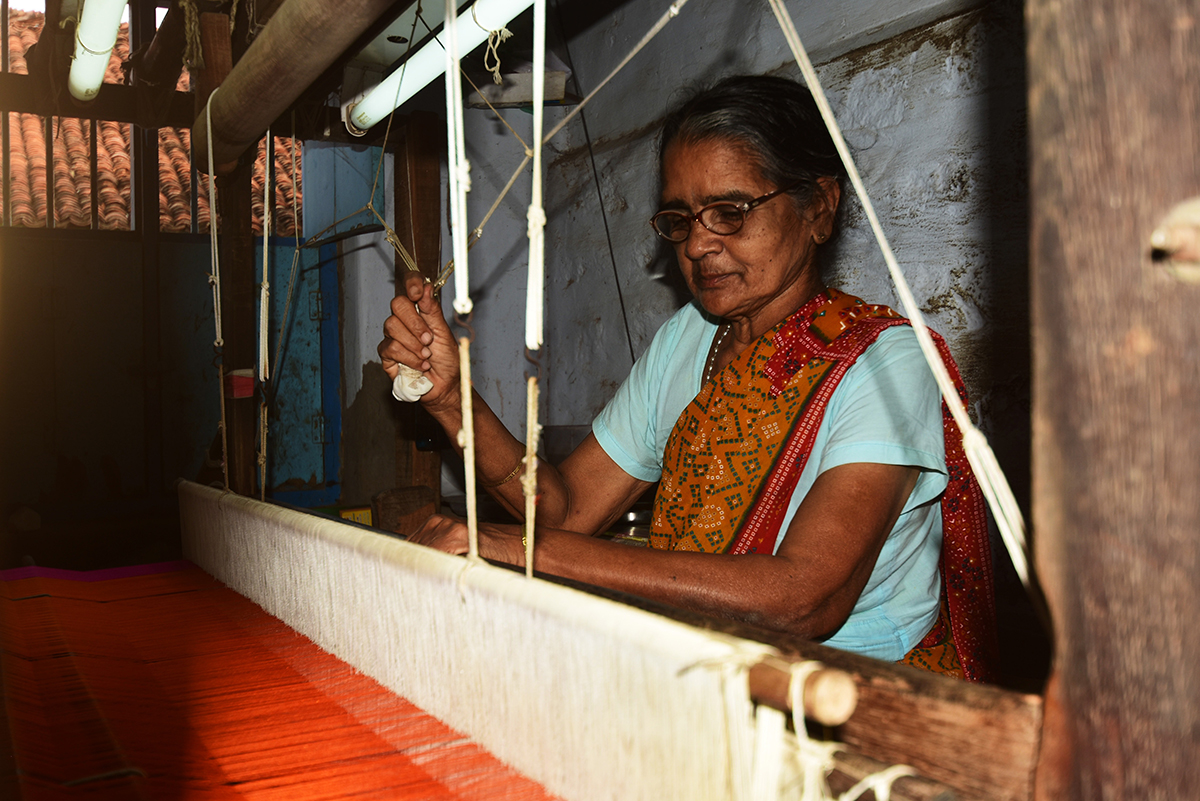
Saraswathi, 67, is the only one in the house weaving.
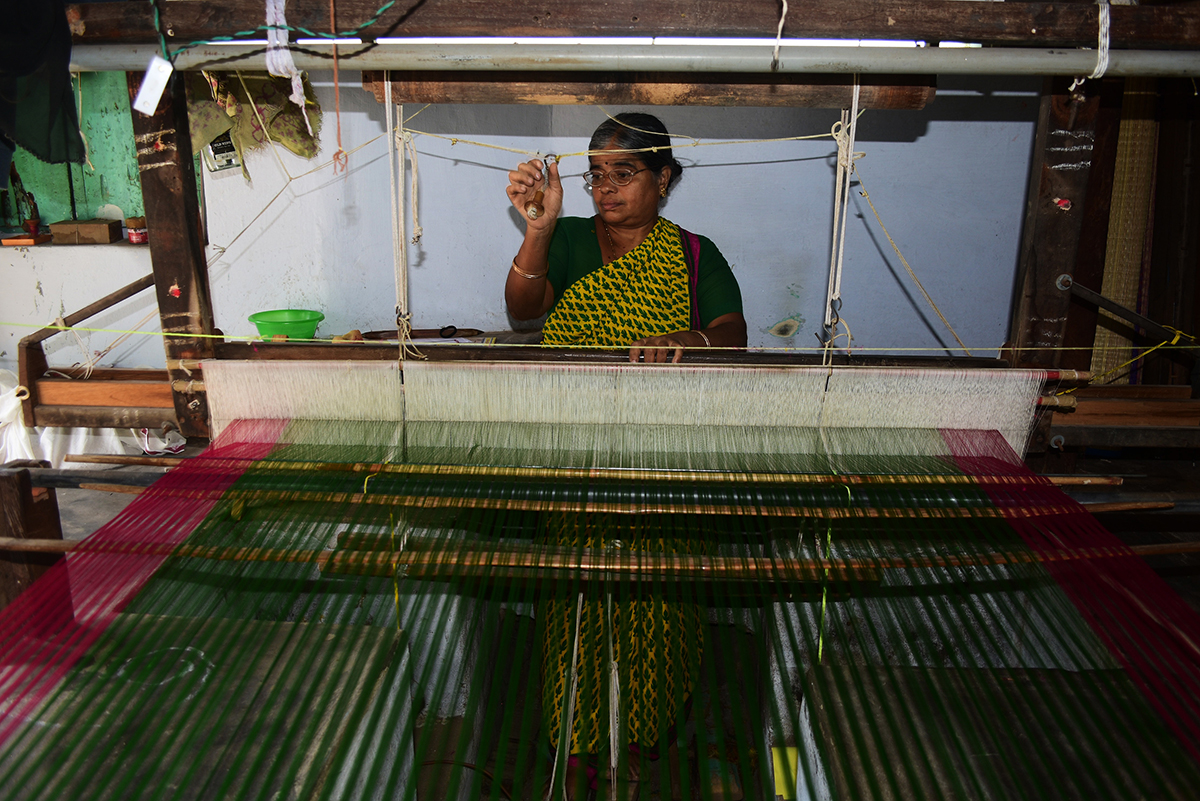
Jayakantha, 45, weaves a saree for an embroidary finish. The looms are generally placed on the floor with a dug out for the peddles to accomodate the height of the machinery to the house
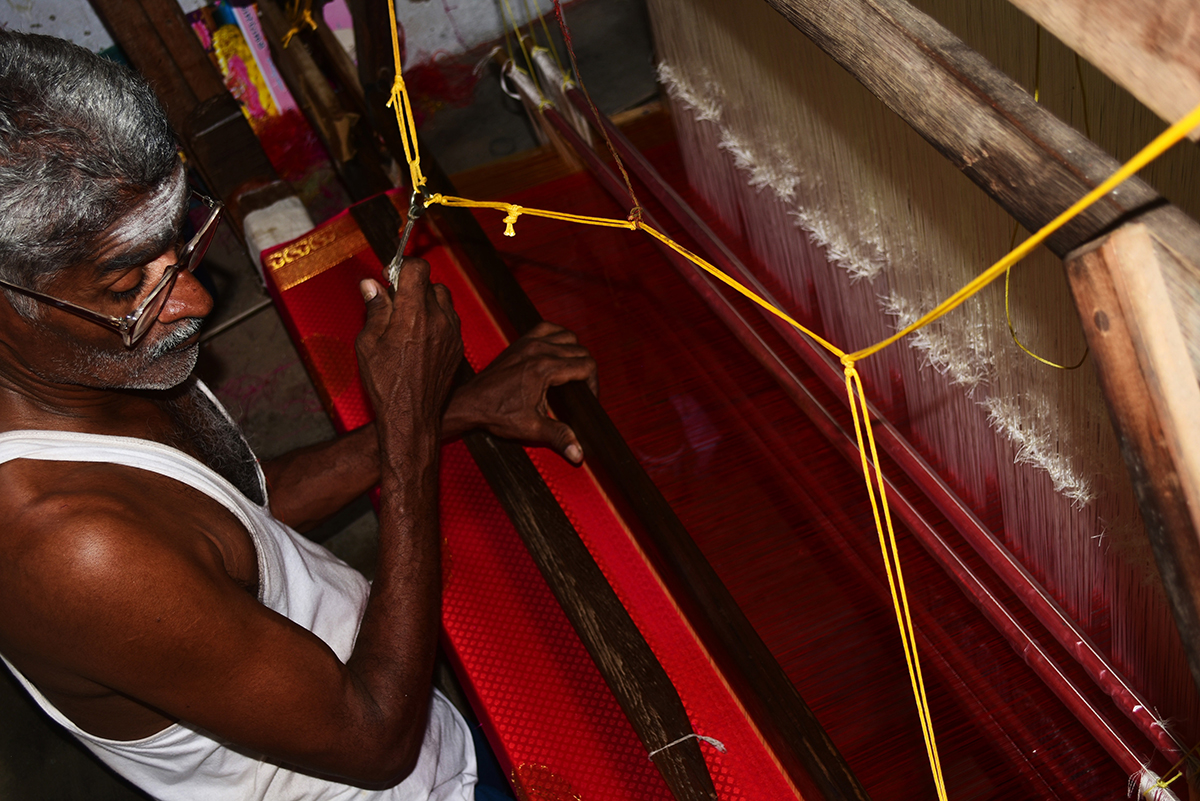
Sundaram weaves for a living.
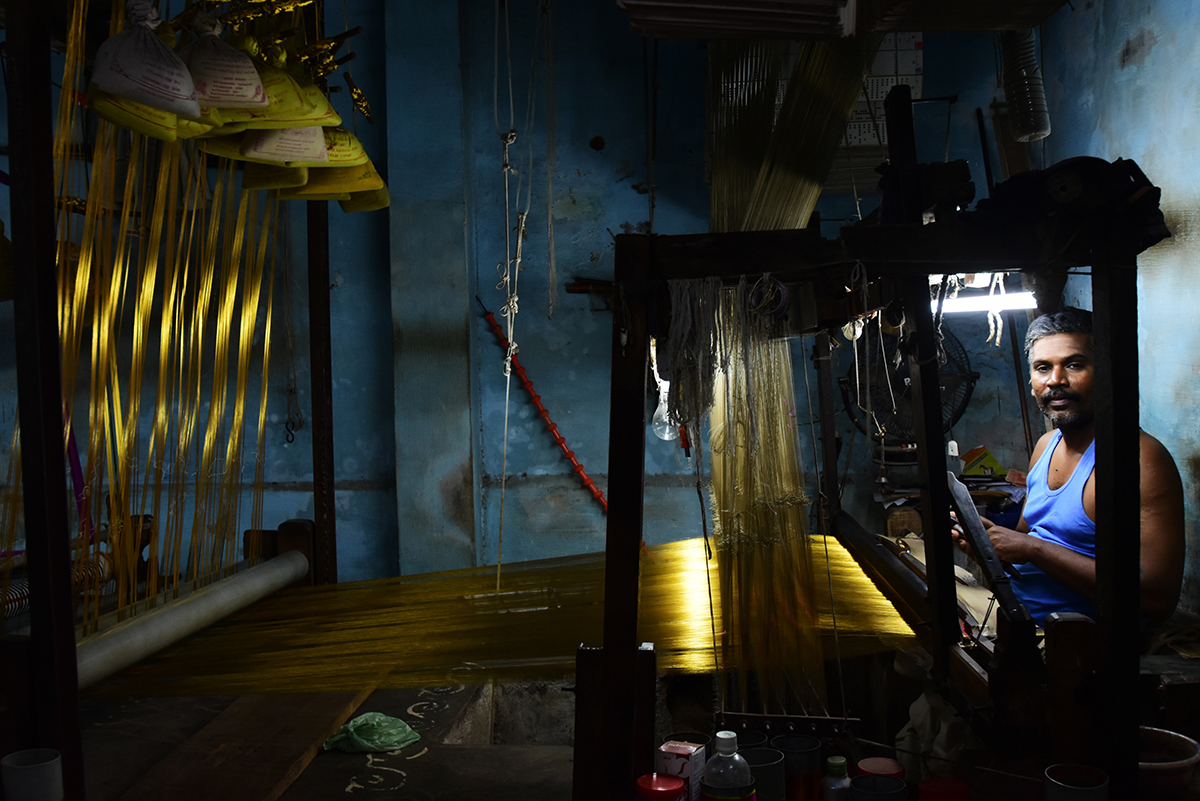
Jagadesan weaves a saree that is made entirely of zari. Zari is the silk and silver thread coated with gold to give the richness and elegance to the silk sarees. The saree approximately weighs around 2-5 kg
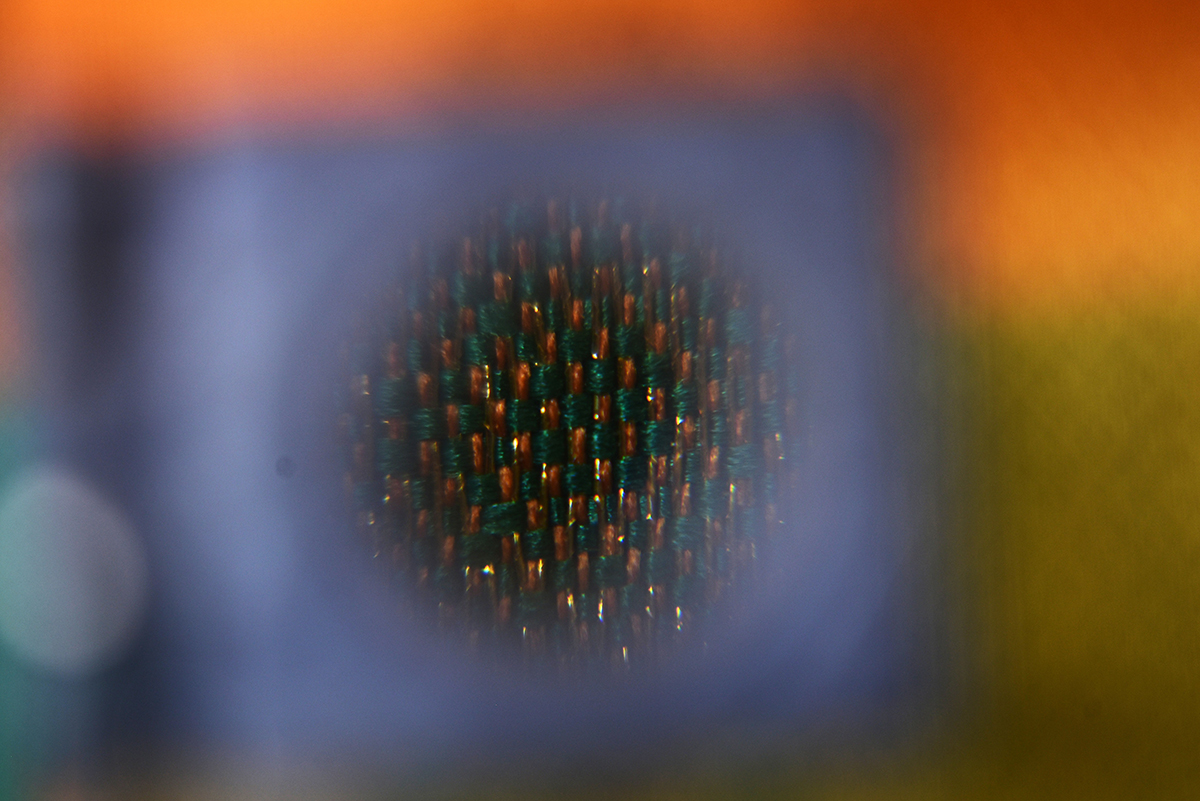
A close up view of the warp and weft
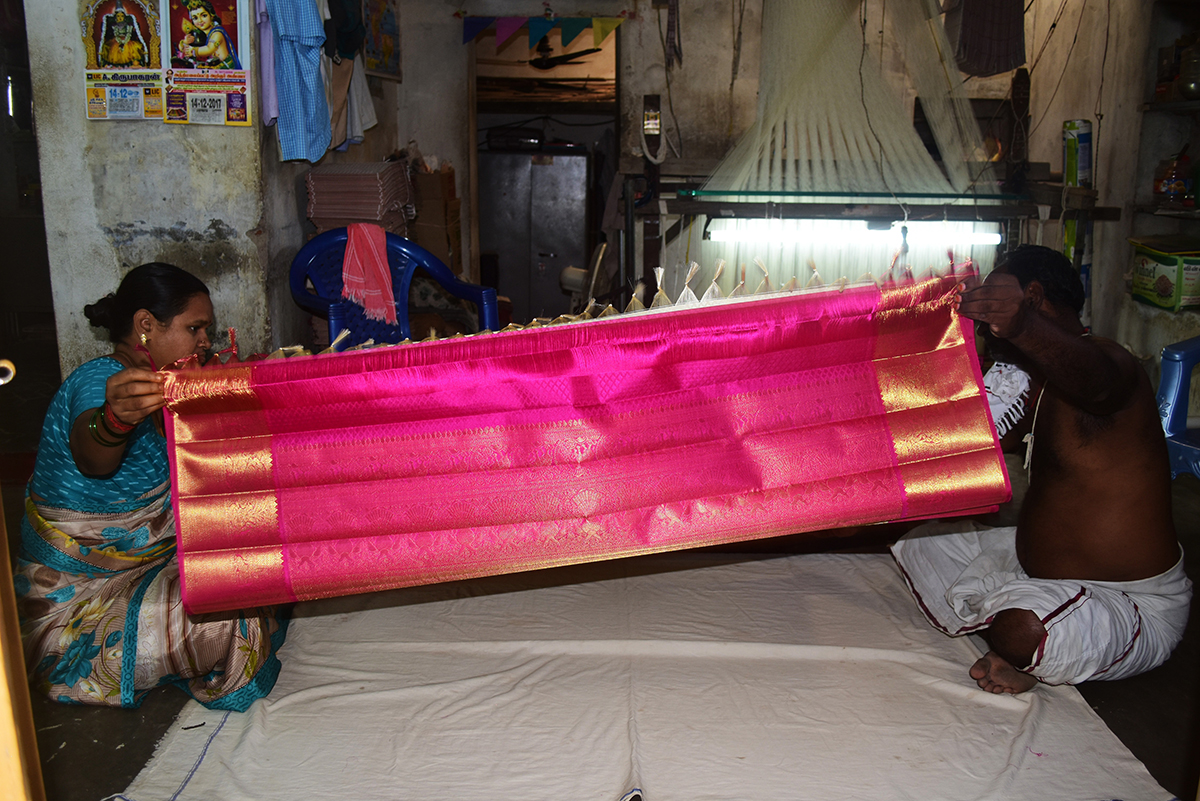
Devasenathipathi and his wife, Gomathi, pack the finished saree into a box. The weavers are responsible to deliver the neatly folded and boxed sarees to their respective cooperatives.
To conclude, the weavers of Onnupuram (which loosely translates as ‘Onnu’ to one or single), recognize themselves as a community bound as a whole by their heritage. They are proud to stand together as one strong and tight weave as their warp and weft.
More from The Byword
Comments
*Comments will be moderated
How to buy the products from the weavers directly?
Kani
Sep 8, 2021 at 00:06
How to buy sarees from the weavers?
Sowmya Sekar
Oct 30, 2020 at 17:46
How to buy the products from the weavers directly?
Vidhya
Jul 1, 2020 at 07:00
Feeling proud to read about our native place !
Girija Jayanandam
Mar 23, 2018 at 06:37
Very good
venkatesan
Mar 4, 2018 at 07:43
Very good
Venkatesan s v
Mar 4, 2018 at 07:42




